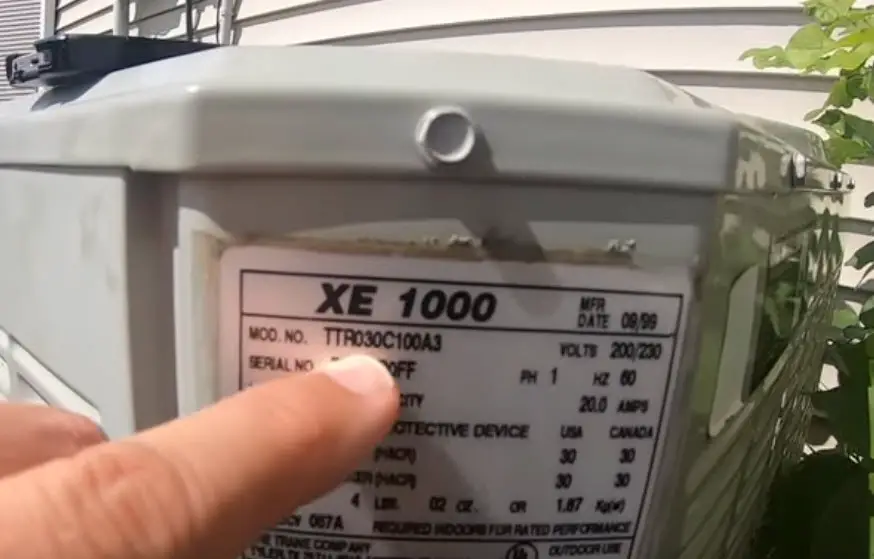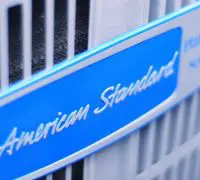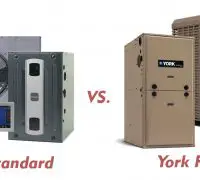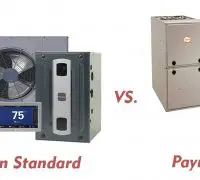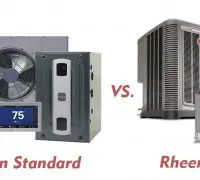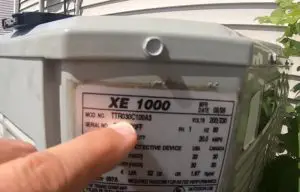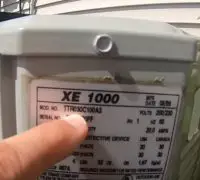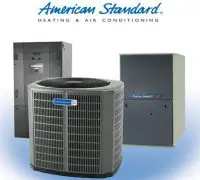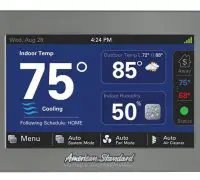When you invest in the proper AC unit for your home, the brand and warranty become useless if the AC is the wrong size for your home. You need to understand that the air conditioner’s size impacts your home’s comfort. In the HVAC world, bigger is not always better.
If the air conditioner is the right size for your home, it will work much more efficiently. If the AC unit is too small, it will constantly run in an attempt to create a cool, comfortable environment inside. The risk of uneven cooling throughout the house is relatively high. Should the AC unit be too large for your home, the unit will turn on and off. It will lower the indoor temperature within minutes and shut down. However, after repeating the cycles too many times, the AC unit will wear and tear out long before its time.
Page Table of Contents
How to tell tonnage on American Standard AC units?
If you don’t know the size of your American Standard AC unit and want to know its tonnage, you only need to examine it thoroughly. Take a look at the model number on the data sticker at the side of your AC condenser, respectively, the outdoor unit. You have to take a look at the 7th and 8th digits of the model number. The number is divisible by 6 or 12 and refers to the nominal BTY of the system in thousands.
A ton of air conditioning is equivalent to 12,000BTU, and 30 divided by 12 is 2.5. Therefore, the data plate below refers to a system in 2-1/2 tons.
Here’s a list of the range to expect with American Standard AC units:
- 18 = 1.5 tons
- 24 = 2 tons
- 30 – 2.5 tons
- 36 = 3 tons
- 42 = 3.5 tons
- 48 = 4 tons
- 60 = 5 tons.
The data plate below is for a 2.5-ton system.
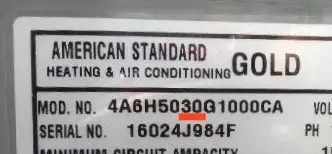 If you’re unsure if you have found the correct two numbers, you can always find them by searching for the RLA rating on the data plate. RLA (Rated Load Amperage) refers to the maximum amperage that has to be when the condenser is operating. When you divide the RLA by 6 (in older units) or by 5 or 6 (in newer models), you will obtain a number that estimates the tonnage of your system. We want to highlight that it’s not the most accurate estimation, though.
If you’re unsure if you have found the correct two numbers, you can always find them by searching for the RLA rating on the data plate. RLA (Rated Load Amperage) refers to the maximum amperage that has to be when the condenser is operating. When you divide the RLA by 6 (in older units) or by 5 or 6 (in newer models), you will obtain a number that estimates the tonnage of your system. We want to highlight that it’s not the most accurate estimation, though.
Also, you have to use RLA and not LRA (Locked Rotor Amperage), which refers to the surge of amps needed to overcome inertia and run the system. Typically, LRA is five times the RLA.
What is AC tonnage? Why is it important?
You don’t need to be a certified HVAC technician to know that cooling a 4,000sq ft. Home requires a more powerful unit than one for cooling a 1,200 sq. Ft. Home. You will need to examine the tonnage of the AC unit to get a picture of the unit’s cooling ability. Therefore, when your technician asks what size you need for your AC unit, it’s not the physical dimensions they need to know but the number of tons.
In the US, the British thermal units (BTUs) measure healing and cooling abilities. One BTU is the heat needed to increase the temperature of a pound of water by 10F. Here’s this: 288,000btus will melt 2,000 pounds of ice in 24 hours to understand what that amount of heat is. Two thousand pounds is a ton.
AC units don’t melt ice nor heat water, as they eliminate the heat in a space. Therefore, in the HVAC industry, tonnage reflects the amount of heat of AC unit able to eliminate from a house in 60 minutes. One ton is equivalent to 12,000btus.
Why is AC tonnage meaningful?
Tonnage reflects the cooling ability of the AC unit and it’s crucial to have the proper size of equipment for your home. If the unit is too small, it won’t manage the hot summer temperatures. When the HVAC system is too big for your home, it will turn on and off more often than needed, which useless wears and tears the AC unit. Additionally, the air will become damp and your energy bill will increase.
